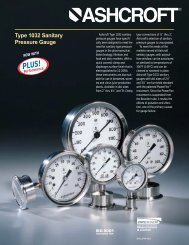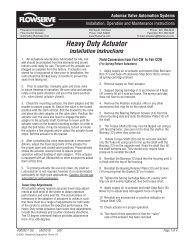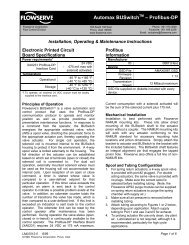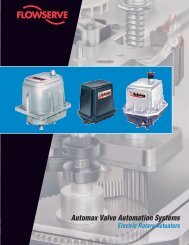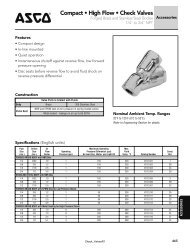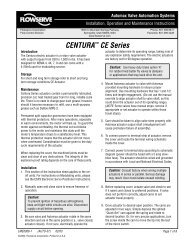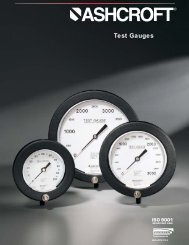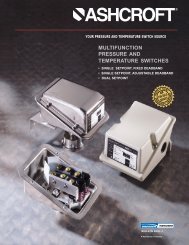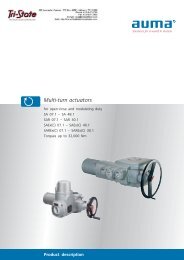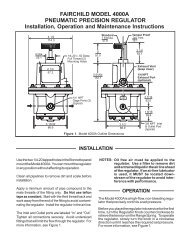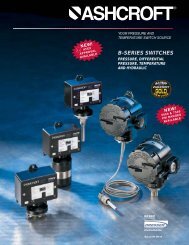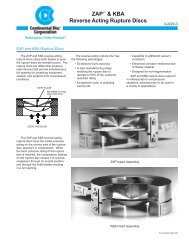Catalog - Tri-State Technical Sales Corp.
Catalog - Tri-State Technical Sales Corp.
Catalog - Tri-State Technical Sales Corp.
Create successful ePaper yourself
Turn your PDF publications into a flip-book with our unique Google optimized e-Paper software.
SIZING FOR VISCOUS FLUIDS<br />
R =<br />
Viscosity Correction,<br />
per API RP520<br />
When sizing a valve for viscous liquid service,<br />
first size the valve for non-viscous conditions,<br />
to determine a preliminary required orifice area.<br />
Select the next larger orifice and then use that<br />
area in determining the Reynold’s number (R).<br />
The formulas below can be used to determine R.<br />
(US units)<br />
Q x (2800) x G<br />
C p<br />
x<br />
A<br />
– OR –<br />
12700 x Q<br />
R = SSU x A<br />
R =<br />
(SI units)<br />
Q x (1880) x G<br />
C p<br />
x<br />
A<br />
– OR –<br />
8522 x Q<br />
R = SSU x A<br />
2 2<br />
A = Effective (selected) discharge area (in or cm )<br />
Q<br />
G<br />
C p<br />
= Required flowrate at the flowing temperature<br />
(gpm or lpm).<br />
= Specific gravity of the liquid at the<br />
flowing temperature. Water: G = 1.0<br />
= Absolute viscosity at the flowing temperature,<br />
in centipoise.<br />
SSU = Viscosity at the flowing temperature,<br />
in Saybolt Seconds Universal.<br />
After the value of R is determined, K v<br />
is obtained from<br />
the chart below. K v<br />
is then applied to correct the<br />
“preliminary required flow area”. If the corrected area<br />
exceeds the chosen standard orifice area, repeat the<br />
above procedure using the next larger orifice size.<br />
Minimum and maximum conditions should be<br />
considered when determining the required orifice size,<br />
for proper pilot valve operation.<br />
17<br />
F7000/8000 SERIES



